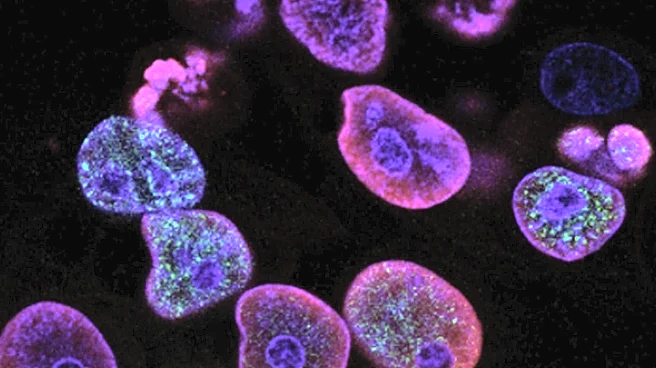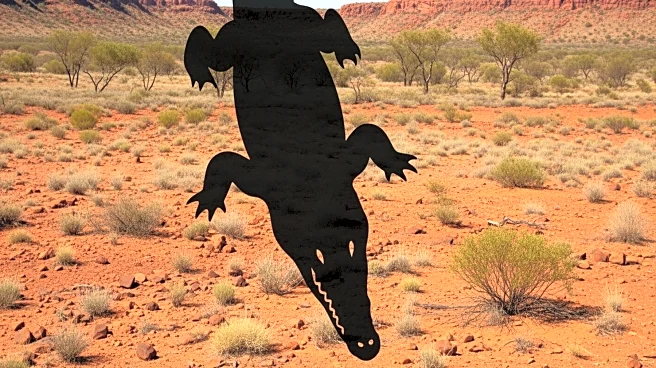What's Happening?
Scientists have successfully sequenced the oldest RNA ever recovered, from a 39,000-year-old woolly mammoth named Yuka, found in Siberia. This breakthrough challenges the belief that RNA is too fragile to survive in ancient samples. The research, published
in the journal Cell, demonstrates that RNA can provide insights into the gene activity of ancient organisms. The study revealed active genes related to muscle endurance and metabolic stress, suggesting the mammoth's last moments involved fleeing from a predator. This discovery opens new avenues for understanding ancient life and reconstructing gene expression in extinct species.
Why It's Important?
The ability to sequence ancient RNA has significant implications for the study of evolutionary biology and the reconstruction of past ecosystems. It allows scientists to gain a more detailed understanding of the physiological and environmental conditions faced by extinct species. This advancement could lead to new insights into the evolution of gene expression and the adaptation of species to changing environments. Additionally, it may provide valuable information about ancient RNA viruses, contributing to our understanding of viral evolution and potential future threats.
What's Next?
Researchers aim to refine techniques for recovering ancient RNA, potentially extending the timeline for viable RNA samples even further back in history. This could lead to a broader application of RNA studies in paleogenomics, offering a more comprehensive view of ancient life. The study also sets a precedent for exploring RNA in other well-preserved specimens, which could enhance our understanding of historical biodiversity and the genetic basis of adaptation.
Beyond the Headlines
The discovery of ancient RNA challenges existing paradigms about molecular preservation and highlights the potential for new scientific methodologies to uncover hidden aspects of evolutionary history. It also raises questions about the ethical implications of using genetic information from extinct species and the potential for synthetic biology to recreate ancient traits.













